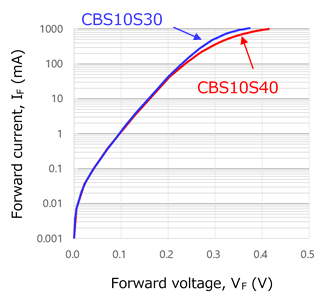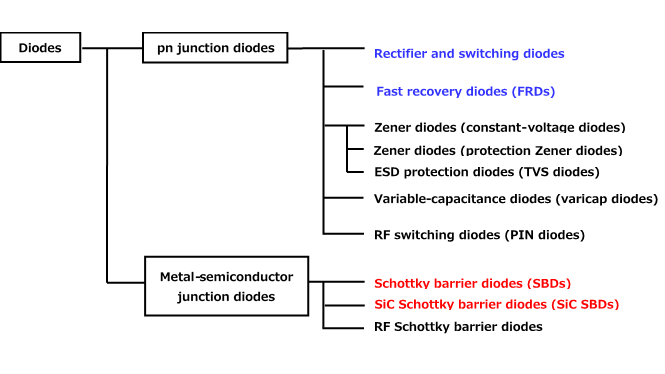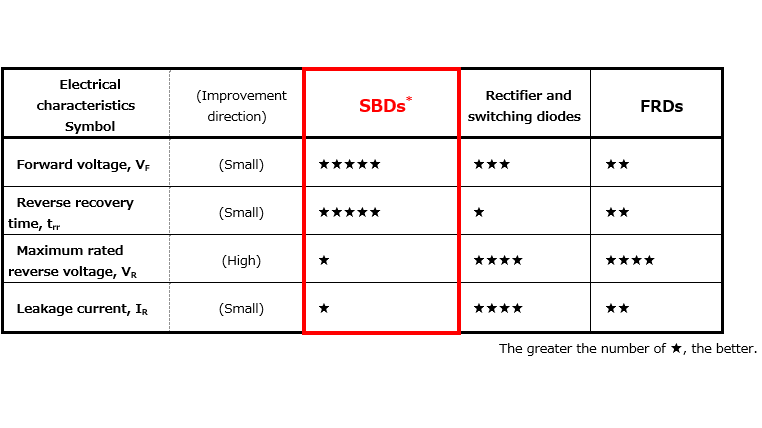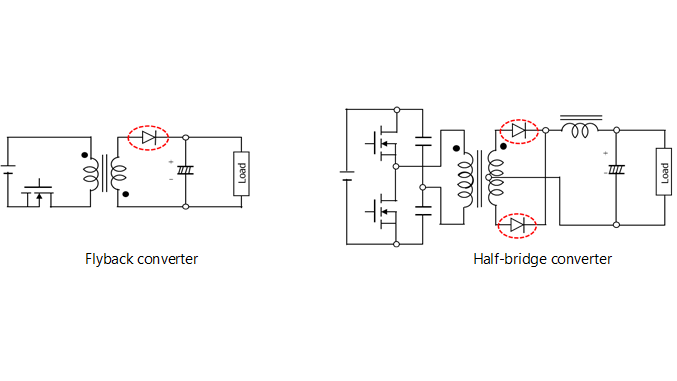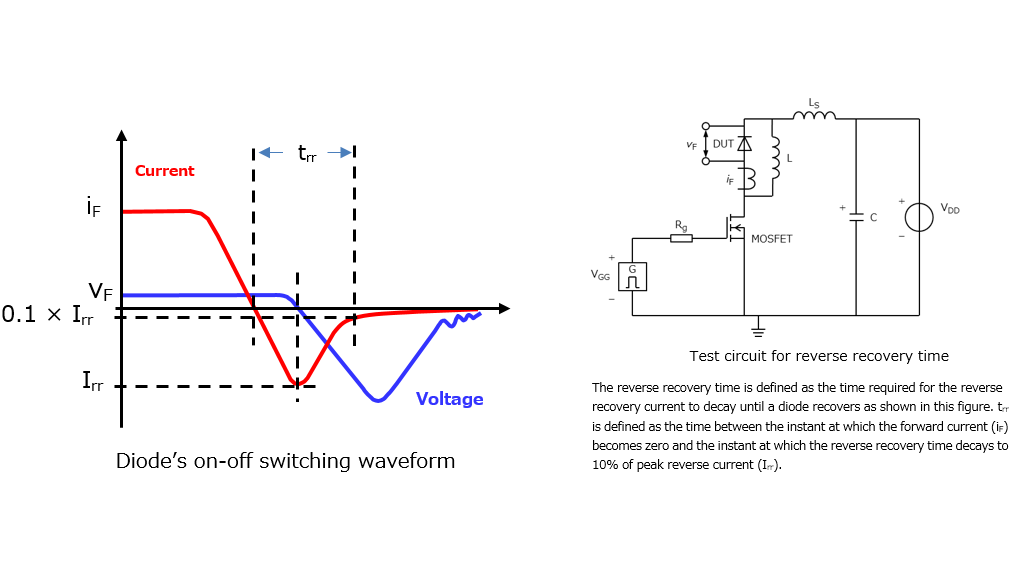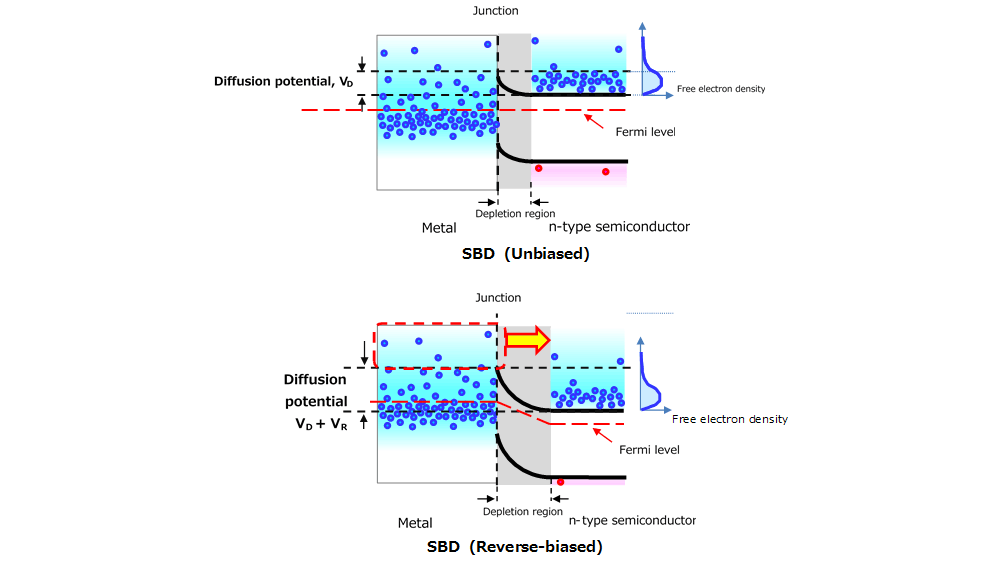- 型号 & 关键词搜索
- 交叉搜索
- 参数搜索
- 库存查询与购买
This webpage doesn't work with Internet Explorer. Please use the latest version of Google Chrome, Microsoft Edge, Mozilla Firefox or Safari.
请输入3个以上字符 Search for multiple part numbers fromhere.
The information presented in this cross reference is based on TOSHIBA's selection criteria and should be treated as a suggestion only. Please carefully review the latest versions of all relevant information on the TOSHIBA products, including without limitation data sheets and validate all operating parameters of the TOSHIBA products to ensure that the suggested TOSHIBA products are truly compatible with your design and application.Please note that this cross reference is based on TOSHIBA's estimate of compatibility with other manufacturers' products, based on other manufacturers' published data, at the time the data was collected.TOSHIBA is not responsible for any incorrect or incomplete information. Information is subject to change at any time without notice.
请输入3个以上字符
3-6.最大额定反向电压(VR)
VR是可在SBD上施加的最大额定反向电压。
当SBD被反向偏置时,它被施加在从结延伸到半导体的耗尽区上。耗尽区的宽度取决于掺杂剂浓度;掺杂剂浓度越高,耗尽区越窄。增加或减少反向偏置会导致耗尽区扩大或缩小。
图3-10显示了耗尽区宽度与电场之间的关系。由耗尽区宽度和电场形成的三角形面积代表所施加的反向偏置电压。
随着反向偏压增加,电场变大。当电场超过某个值(硅的最大击穿电场)时,SBD会被由此产生的过大电流破坏。VR是指不会导致超过击穿电场的最大反向偏置。
因此,SBD的掺杂程度越低,其额定VR越高。
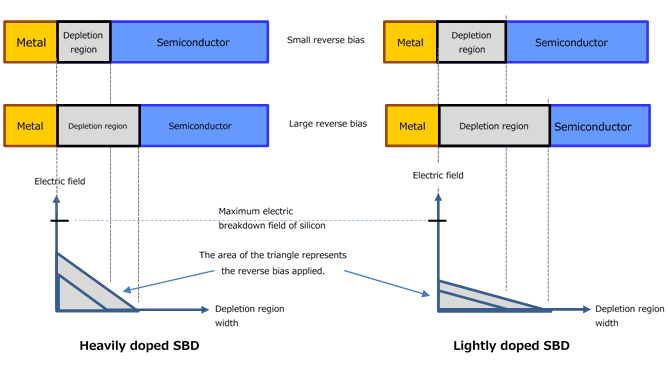
掺杂剂浓度还直接影响二极管的串联电阻。二极管掺杂程度越高,其串联电阻就越小。对于pn结二极管,由于上述电导率调制效应导致的过剩载流子降低了掺杂剂浓度的影响。然而,由于SBD为单极器件,因此SBD不具有电导率调制效应。
图3-11比较了SBD的IF-VF曲线,VR分别为30V和40V。(CBS10S30和CBS10S40)。在低电流区域,CBS10S30和CBS10S40的IF-VF曲线相同。当正向电流接近最大额定电流(1A)时,具有更高VR的CBS10S40在相同的正向电压下比CBS10S30传导更少的正向电流。
这是因为CBS10S40的掺杂浓度较低,因此具有比CBS10S30更高的串联电阻。随着VR的增加,这种趋势变得更明显。因此,很难提高硅SBD的最大额定反向电压(VR)。
